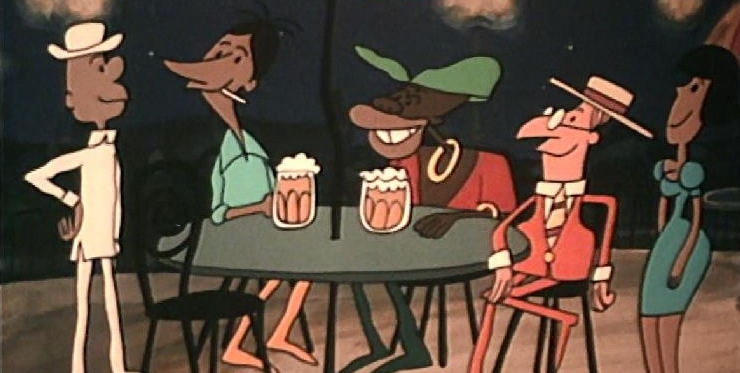Xavier Carbonell, SIGNIS Correspondent
In the Cuban memory, there is something that resembles paradise: the decade of 1980. The mist of time and the sweetness of nostalgia gave birth to a saying among those who lived during that period: cuando Cuba reía, “when Cuba laughed”. And, indeed, it was or it seemed to be truth. Like a recently married women, the Island was entering to an era of prosperity, where the sons of the revolution began to live their youth.
My parent’s generation could distinguish between the austerity of the seventies and the new époque. The Soviet Union coddled Cuba in the economical sense, creating a dangerous and morbid dependence. The Cubans could go to work and study in soviet countries and the nation itself, in a way, was part of a political community in the other side of the world.
Our cinema, as our life, found new ways to be developed. Cartoons were one of those steps to the future, and the Cubans never cease to watch and quote them.
The indisputable master of Cuban animation is Juan Padrón, creator of our dearest and most remembered series of cartoons: the adventures of Elpidio Valdés, a mambí (it is, a fighter of the Cuban independence war against Spain), which first film’s premiere was in 1979. The work of Juan Padrón is colossal: short films, comics, movies and an extremely active life in the world of culture. He collaborated with the famous Argentinian artist Quino, to animate his beloved character Mafalda.
But, among those movies, Vampiros en La Habana (Vampires in Havana, 1985) has a special place. Havana in the thirties, the hot and explosive city, night clubs and cabarets vibrating with sound of jazz; is also the city of gangsters, facing the dictatorship of Gerardo Machado, one of the bloodiest tyrants of the republican Cuba. To this scenario, already fantastic, arrive a vampire scientist and his nephew, Joseph.
They come from Europe, where the doctor has rehearsed with his father, the mythical Count Dracula, a formula that allows the vampires to resist the sunlight. But the experiment was a failure and the vampire is pulverized during his morning hunting. The diabolic aristocrats of the Old Continent banish the young genius, and he decides to exile himself in the tropics.
Years later, the scientist perfects the formula in his nephew and creates for him the possibility to walk and live under the light of the sun, without revealing the boy his true condition. Immediately a subterranean war is declared, in order to take over the formula, between the Dusseldorf Vampire Group and the Capa Nostra of Chicago.
Without noticing this, the scientist’s nephew (who has already taken the very Cuban nickname of Pepito), faces the country’s dictatorship together with a group of friends and fellows. Between two radically different battlefields, Pepe —also a passionate trumpet player— composes a musical version of the Vampisol’s formula, revealing a free and easy way for vampires around the world to live under the sun.
This animated film was the best reflection of the Cuban laughter, with the spirit of joke and the spicy language represented in the metaphor of the vampires. The entire country was in a good mood, and expressed it in films like this one, energized by the vitality of who desires to be happy. Nevertheless, the Great Crisis of the nineties was about to come. And, since nobody wanted to open the doors of paradise, it had to demolish the only wall that held it: the one who fell in 1989.
***
The collection of articles “Cuba in Seven Films”, published by SIGNIS originally in Spanish, in 2020, received the Paco Rabal Award of Cultural Journalism, Madrid (Spain) in the category of “Young Promise”.


